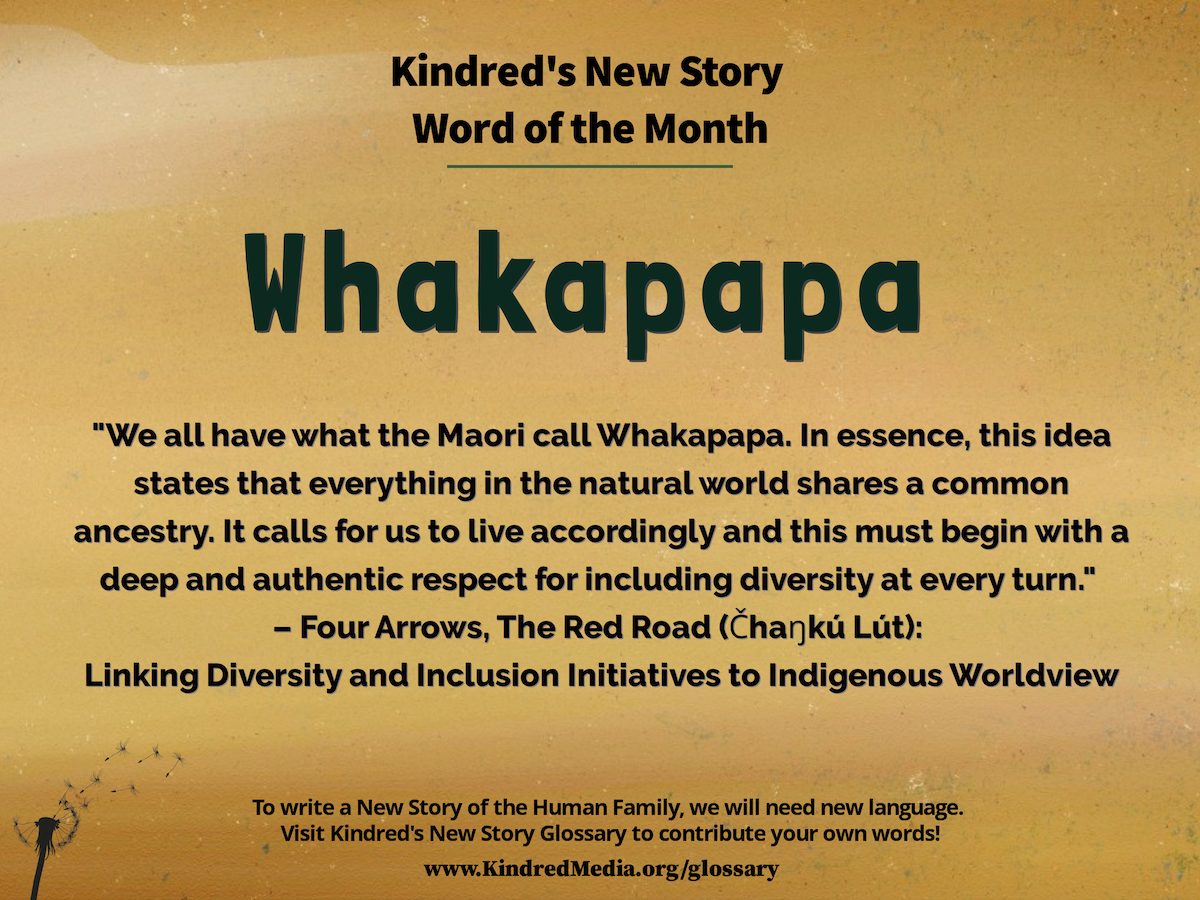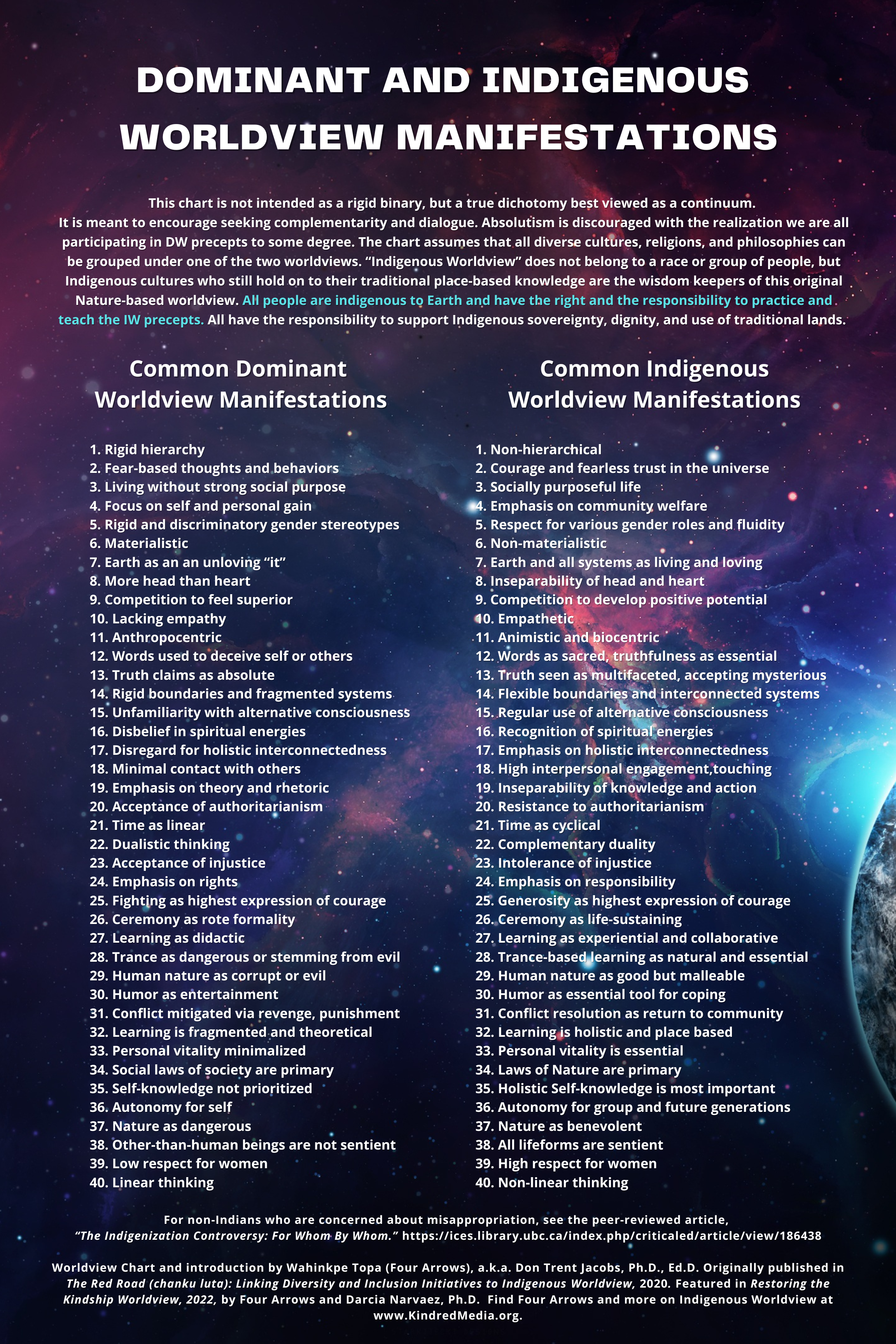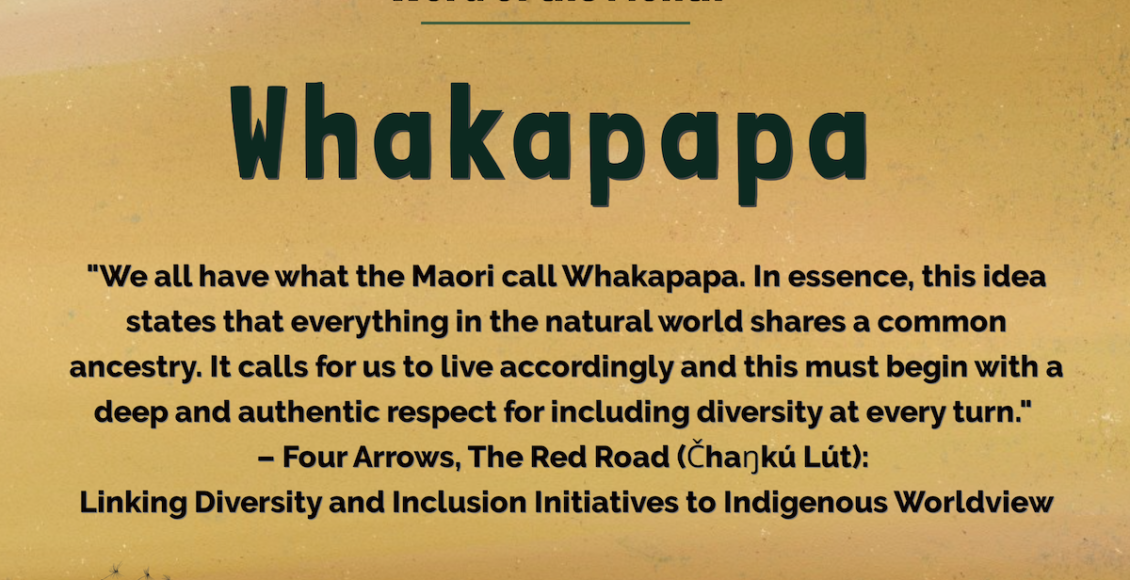SHARE THE GRAPHIC:

What Is Whakapapa?
“We all have what the Maori call Whakapapa. In essence, this idea states that everything in the natural world shares a common ancestry. It calls for us to live accordingly and this must begin with a deep and authentic respect for including diversity at every turn.”
– Four Arrows, The Red Road (Čhaŋkú Lút): Linking Diversity and Inclusion Initiatives to Indigenous Worldview
 Read Four Arrows’ work on Kindred.
Read Four Arrows’ work on Kindred.
View, download, or purchase Four Arrows’ Worldview Chart here.
Learn more about Indigenous Worldview on Kindred here.
More from the book, The Red Road
One sticking point that needs discernment relates to whether we are addressing D&L (Diversity and Inclusion) from an Indigenous Worldview perspective or from a place-based, local Indigenous knowledge one. Non-Indigenous educators are less restricted as related to learning and teaching worldview reflection and Indigenous worldview precepts. Placed-based knowledge requires language fluency, knowledge of ceremonies. It is vital we attempt to preserve the sovereignty of such First Nations. Indigenous languages and traditions stem from understanding the diversity of a particular landscape. Native speakers can offer optimal input into discussions surrounding such local dynamics.
Placed-based knowledge for regaining an “ethics of responsibility” is ultimately vital for survival. However, with the absence of local wisdom keepers, requires all of us to start with IW (Indigenous Worldview) and try to recapture this knowledge through other means information about local ecological systems. Still, the ultimate source for such knowledge exists in tribal cultures with original languages and spiritual understandings. Wee must fight to preserve these nations. They remain a real-life source for understanding the sustainability of the Indigenous worldview.
More About the Worldview Chart by Four Arrows
This chart is not intended as a rigid binary, but a true dichotomy best viewed as a continuum. It is meant to encourage seeking complementarity and dialogue. Absolutism is discouraged with the realization we are all participating in DW precepts to some degree. The chart assumes that all diverse cultures, religions, and philosophies can be grouped under one of the two worldviews. “Indigenous Worldview” does not belong to a race or group of people, but Indigenous cultures who still hold on to their traditional place-based knowledge are the wisdom keepers of this original Nature-based worldview. All people are indigenous to Earth and have the right and the responsibility to practice and teach the IW precepts. All have the responsibility to support Indigenous sovereignty, dignity, and use of traditional lands.
For non-Indians who are concerned about misappropriation, see the peer reviewed article,
“The Indigenization Controversy: For Whom By Whom.”
Worldview Chart and introduction by Wahinkpe Topa (Four Arrows), a.k.a. Don Trent Jacobs, Ph.D., Ed.D. Originally published in The Red Road (chanku luta): Linking Diversity and Inclusion Initiatives to Indigenous Worldview, 2020. Featured inRestoring the Kindship Worldview, 2022, by Four Arrows and Darcia Narvaez, Ph.D. Find Four Arrows and more on Indigenous Worldview at www.KindredMedia.org
Buy Your Worldview Chart POSTER here.
Download your Worldview Chart poster or graphic below:
Kindred Worldview Chart Starry Night Background in PDF format: Download
Kindred Worldview Chart Starry Night Background in PNG format: Download
Kindred Worldview Chart in black and white for printing in PDF format: Download
Kindred Worldview Chart in black and white for printing in PNG format: Download

« Back to Glossary Index



Comments are closed.